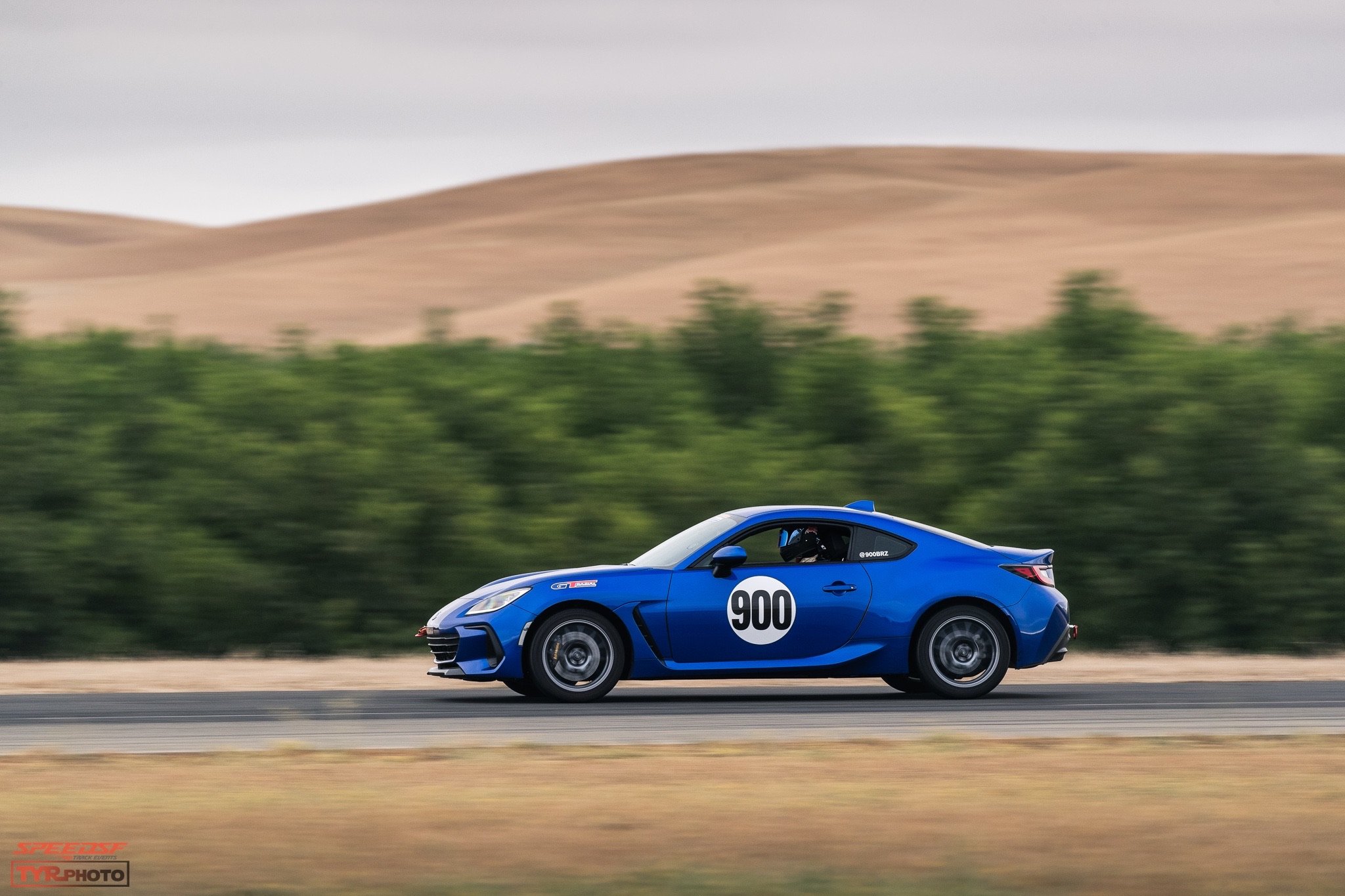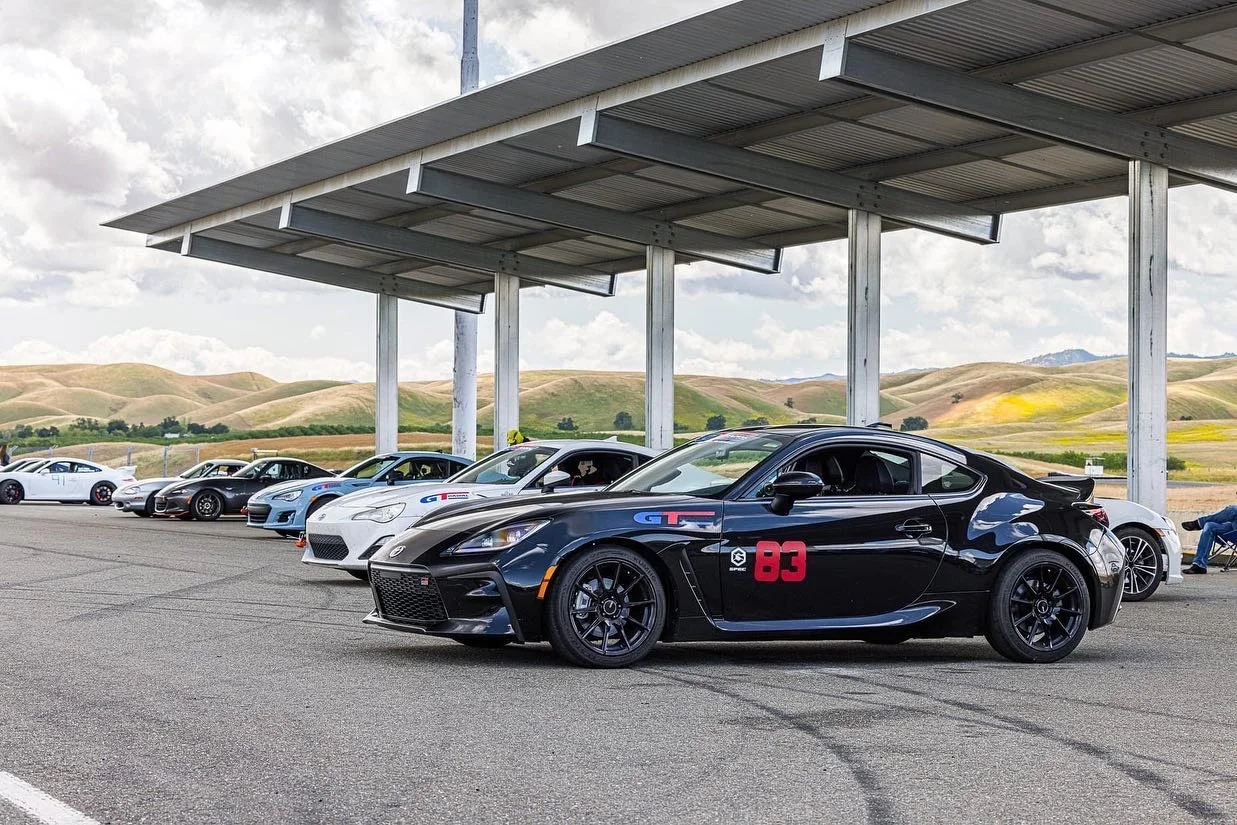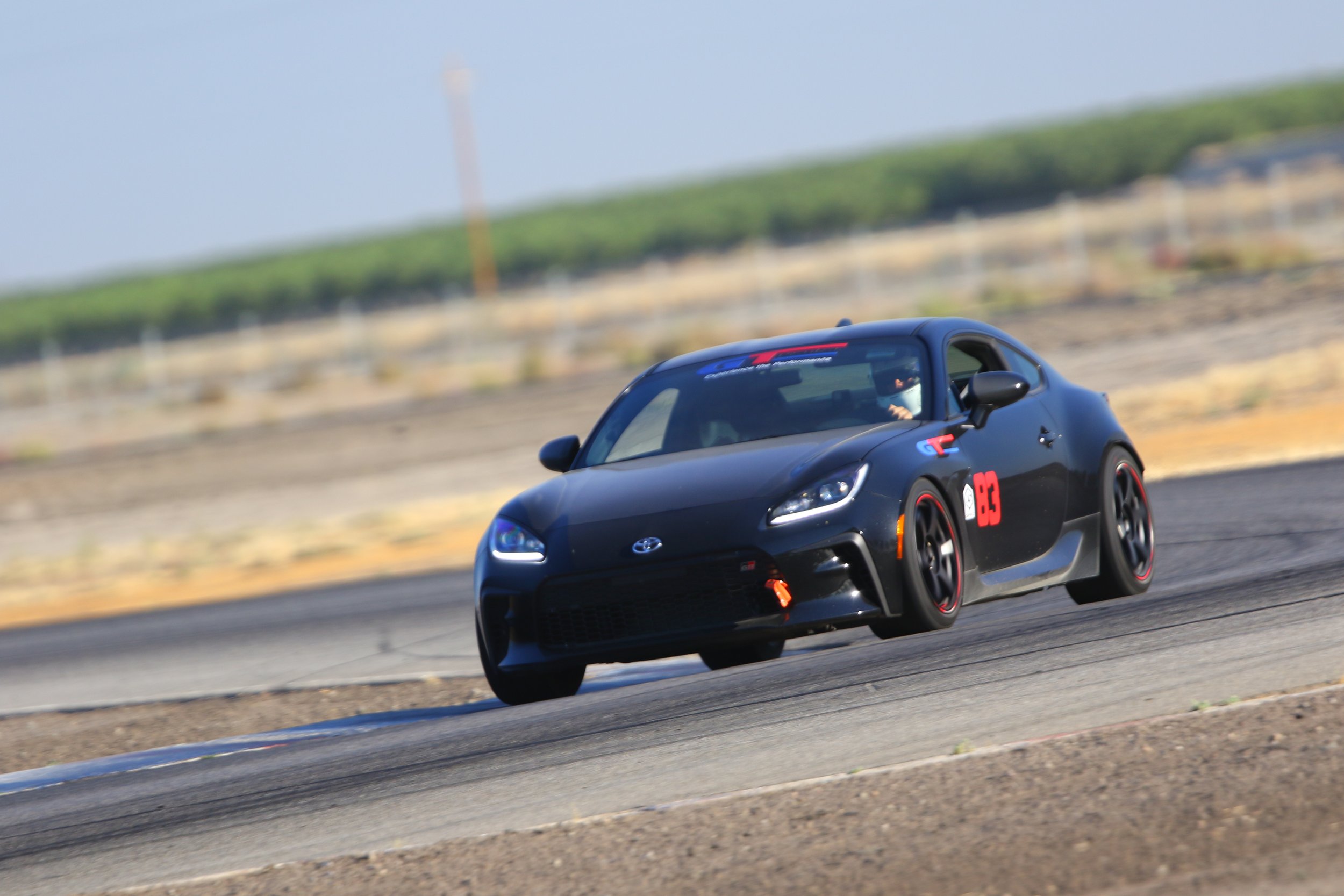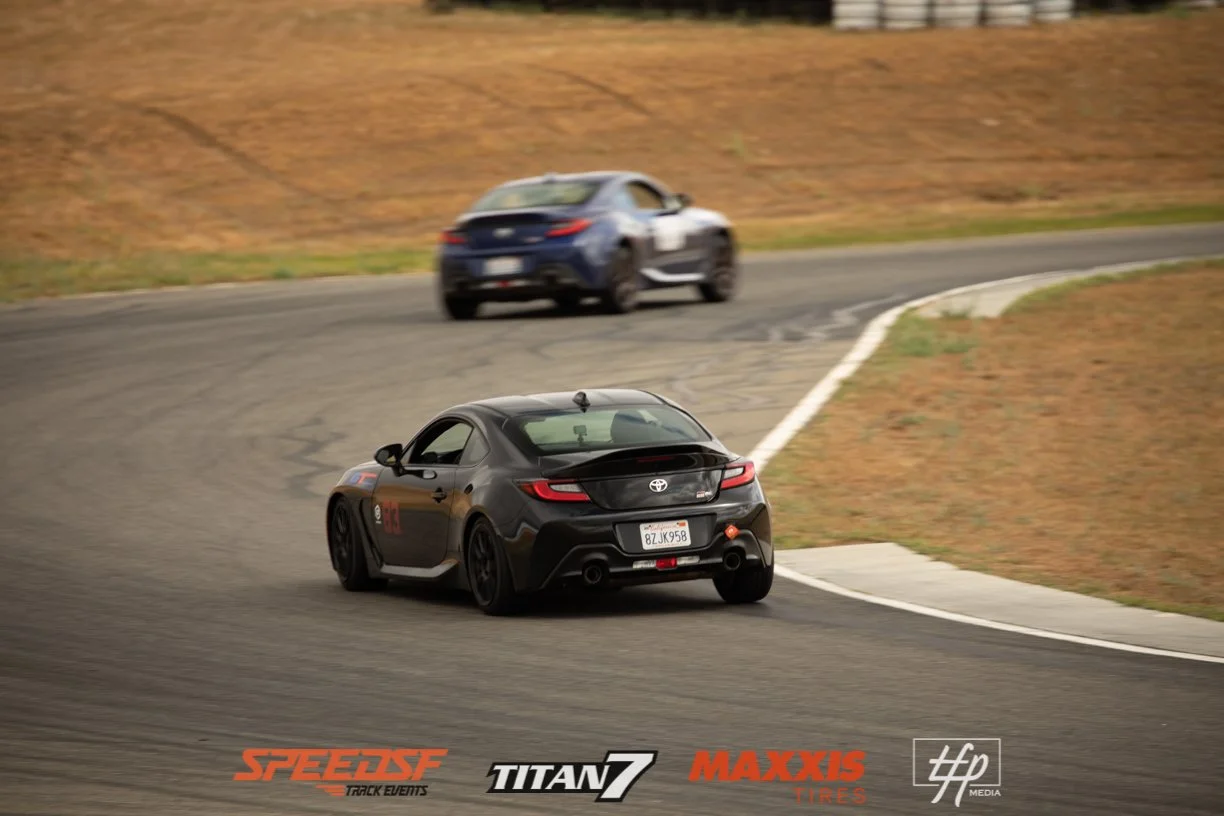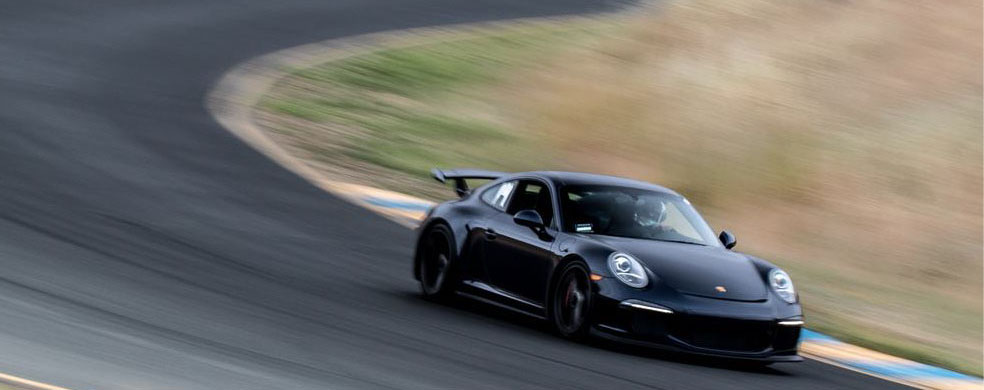
Brian's BRZ: Painful Lessons in Lubrication
Few BRZ owners have been as methodical when it comes to monitoring their engine's oil pressure as Brian Armstrong, who hopes to develop new components to make this popular new platform more dependable.
He’d spent years dreaming of driving on a track. Brian Armstrong had grown up hearing racing tales from his late uncle, a former professional stock car racer; and grandfather, a racer, mechanic, and performance engine builder. Even coming from good stock, Brian hadn’t really found a door into the world of motorsport himself. The opportunity finally arose when he relocated from New York City back to his native California in 2021.
Now in a more car-friendly environment, he decided to get a more track-oriented car and explore performance driving. It didn’t take long to choose a vehicle. He wanted a front-engine, rear wheel-drive platform and relatively low cost of operation. It was either the newly released BRZ/GR86 or the latest MX-5. The stars aligned when he found a 2022 BRZ in World Rally Blue in transit to a local dealer for MSRP. He put down a reservation site unseen and picked it up about a week later, in early December 2021.
In Good Company
He started with autocross, attending 4-5 events before graduating to track days. After a couple events, he found 86 Challenge, a local time attack series dedicated to the 86 platform and sponsored by SpeedSF and GT Radial. He started participating in the Stock Class, which allows only minimal modifications to the car, with the intention of setting a level playing field with a low cost of entry to be competitive. “The stock class appealed to me because all the cars are set up the same, more or less. That means your pace is primarily dictated by driver skill.”
The few modifications allowed in street class help showcase the BRZ’s brilliance out of the box; there are no drawbacks to having such a short list of legal upgrades. His car has the following modifications:
Pedders Offset strut mounts and top camber bolts for -2.5° of front camber
17x8” 949 Racing 6UL wheels wrapped in 225/45R17 GT Radial Champiro SX2 tires
AP Racing Endurance front BBK with Ferodo DS1.11 pads and Carbotech XP10 pads in the rear
7mm Perrin front spacers
ARP extended studs
GR Performance Exhaust
And he’s added a couple ergonomic tweaks: a shift knob from Ansix and, for a little added support, he inserted a section of half-inch yoga mat into the factory seat bolsters. It’s surprisingly effective!
In addition to competition, he also found community in 86 Challenge. Having faster drivers as benchmarks is helpful, but the participants also freely share information to help each other improve as drivers.“We record our telemetry data on AiM Solo 2 or RaceChrono data loggers, then share the data on Google Drive, so we can compare. It’s all voluntary, but we all want to help each other get faster.”
They were also interested in diagnosing some of the BRZ’s from-factory flaws. “We’ve also been collaborators in trying to understand and improve the reliability of the oiling system in the 2nd generation BRZ/GR86,” Brian continued. Two 86 Challenge participants had added oil pressure sensors to their cars and started documenting oil pressure drops on right hand corners as early as November 2022. After several drivers in the broader 86 community suffered engine failures on unmodified engines, including a couple who Brian knows personally, this became a bigger focus..
Brian’s analytical strengths helped him delve into the data and contribute to this effort. He instrumented his own car, with help from 86 Challenge drivers @nostreetracing86 and Miles Kodama, and published a video on YouTube explaining the issue with evidence from his car and two others. He also volunteered to test a prototype baffle from Killer B Motorsport and later Verus Engineering in hopes of finding a simple way to mitigate oil starvation.
Ironically, his engine blew the day one in-depth article he’d contributed to was published.
That expensive afternoon at Thunderhill East went smoothly until it didn’t. Initially, when Brian saw a pressure drop to 0 PSI, he first thought a sensor had failed. When he heard that terrible telltale shuddering sound emanating from his engine bay — the one he’d heard so many times in the big-hit failure videos on YouTube — he knew it was catastrophic.
Thankfully, fellow 86 Challenge driver Kevin Schweigert offered Brian space in his garage to suss out the cause of his FA24’s failure. With the pan on Kevin’s garage floor, Brian took a peek. It took two seconds to determine what had happened.
A small piece of metal had broken off the baffle and blocked the oil pickup. “It was a one-of-one prototype build, so these types of things can happen. Verus immediately accepted responsibility and said they would help with the rebuild.” They covered the cost of a new FA24 long block and, through generous donations from the community, Brian was able to cover the cost of labor and additional parts needed for the rebuild.
Second Stab
During this rebuild, Brian took advantage of the opportunity to make some improvements to his oiling system to try and increase durability and decrease flow restrictions, which can decrease pressure to the crankshaft.
His old oil cooler lines had been rubbing on a sheetmetal seam near the driver’s side headlight and there was insufficient protection from abrasion. It could have been a serious issue if not addressed.
Following advice from other 86 Challenge members, he decided to replace the lines with custom built Goodridge 910 AN hoses—as used in the GR86 Cup Car. These kevlar-braided lines are more abrasion resistant, but also feature a larger internal diameter, for less flow restriction. He also increased the size of the oil cooler core with the hope of reducing temps and reducing flow restriction.
His shakedown of the new engine, oil cooler, and a new generation of oil pressure instrumentation hardware at a recent SpeedSF event was auspicious. Everything worked well, Brian was at ease, so he pushed a little harder than normal set a new PB.
Brian’s committed to the cause. His continuing work with Verus aims to solve this starvation issue and the pair is planning to test a new prototype in January. They now believe the primary issue may be related to the oil returning too slowly from the heads to the oil pan, which the prototype attempts to fix.
The community support and innovation from the major aftermarket players have encouraged Brian to continue chancing his baby in an attempt to solve the problem which worries most BRZ owners. Undaunted by the big bang this year, he’s planning on returning to Stock class in the 86 Challenge in 2024. Consider it a testament to a lovely atmosphere among cooperative drivers and an exhilarating platform worth taking a few risks for.
Fenton's BRZ: The Dependable Workhorse
Rather than go for the all-out track car, Fenton decided a more versatile vehicle would better suit his current needs. After making only a few modifications, he’s been able to enjoy a nice balance of reliability, daily comfort, excitement, and on-track competence.
He had started his quest for the perfect street-track hybrid with high standards. The tactile response of his first S2000—yes, even with vaguer steering—had Fenton smitten with raw cars that bristled with energy and urgency. Then there were a couple Porsches—a pair that taught him about all the bliss and all the frustration that comes with owning a German sports car pushing two decades. He’d set out to try and get something supercharged with emotion, but later realized that there’s usually a high price to pay for that sort of zing.
As time went on and his priorities changed, he realized that it might make sense to try something new. He didn’t want to give up on his quest for a usable sports car, but he was willing to accept that a warranty and back seats meant just as much as speed and immersion. It could be quick and capable, and even if it didn’t have that undiluted feel that some of his older cars did, the compromise would be better for what he, a casual track day driver with a need for a practical daily, was looking for.
Versatility: A Sign of Experience
His search for a great all-rounder coincided with the release of the second-generation BRZ. It seemed like fate: more torque, more room than his S2000, and a warranty that granted him some peace of mind, it seemed to have most of what he was after. The rash of outrageous markups had him calling dealers within a thousand-mile radius to find someone who wouldn’t gouge him. A few days later, he booked a flight to Oregon and made one his own.
It looked fast in World Rally Blue, and fitted with a six-speed as well as an LSD, it had all the performance options he wanted for track duty. However, its real-world usability still had to be determined. Fortunately, he had an 800-mile trek back to the Bay Area to fully experience that side of the new BRZ.
Civilized, Capable, Comfortable
His trek along the coast only confirmed his suspicions: the BRZ was an excellent road car with the sort of manners one wants from something they’ll spend their morning commute in.
“Visibility is excellent—far better than my Porsches or an S2000 with the top up. NVH can be a bit high on freeway journeys, but that's the price you pay with a 2,800-pound car. Even so, it beats my previous cars and the older BRZ in that respect.”
Because of its good ergonomics and easy ingress/egress, it doesn’t morph into an iron maiden during long distance drives or irritating hours in traffic.
“The seat has plenty of lateral bolstering for the torso, but not quite enough to secure my thighs when driving fast. That’s not ideal for the track, but it does make the seat easier to get in and out of. For now, I don’t have any plans to get a bucket seat.”
“The steering is telescopic and height adjustable. The steering feel is not anywhere as good as my 997.1’s, but it is quite good. I’d rate it a 7/10; as far as electric racks go, it has a good amount of weight and feedback, it’s not vague around the center, and it’s fast. It only takes a tiny bit of steering input and the car darts.”
There’s also real headroom and enough space in the footwell to keep his legs from cramping. For a man of average height and build, the second-gen’s cabin is a genuinely comfortable place to sit for extended periods—even some of his taller friends agree with this.
Performance Pickup
If the new BRZ has something which helps both its real-world versatility and its on-track performance, it’s the increase in displacement over its predecessor.
“From a performance standpoint, the second-gen is better in every way than the first-gen. The torque dip is not a significant problem, it doesn’t feel underpowered.
True, it doesn’t sing at the top end like an F20/22 will, it doesn’t have the same narrow powerband. The FA24 makes good torque from 3,500 revs and just barely plateaus past 7,000 rpm. “Actually, it’s a pretty rev-happy engine. It isn’t electric at the top of the rev range, but it likes to be revved out,” he adds.
Fortunately, the BRZ’s famously wonky throttle response is less noticeable on track. At speed, it feels linear and natural.
Mostly Unmolested
While it’s fun and focused enough in stock form to provide real pleasure on the track, Fenton wouldn’t be doing his fanbase much good if he left it totally factory. However, as this car is meant to be more dependable and economical than it is fast, he’s shaped some of his tuning approach around cost savings and reliability to ensure his weekends go smoothly. No matter how quick and engaging it could be, it’s more important that it’s running on Monday morning when he needs to start his commute.
He put reliability first—just the bare minimum. To keep the car happy during a ten-lap session, he had to first address the car’s oiling issues. “An oil cooler is an absolute must—the OEM cooler is useless,” he added. It required a little custom bracketry, but his Colorfittings aftermarket cooler went in easily.
The OE oil isn’t really up to track demands and needs to be flushed—a realization he had after trying one track day with it. The factory 0W20 spilled out thick, black, and opaque. Thankfully, it’s not a picky car which only sips the finest; he skipped the primo Motul oil and settled on the more accessible Pennzoil Platinum 5W30.
However, the good stuff is circulating through much of the drivetrain. Fenton flushed the OEM diff and transmission fluids and replaced them with Motul 75W90. Better heat resistance, reduced wear and tear, and improved peace of mind.
Only Minor Modification Needed
After ditching the stock pads for a set of Raybestos ST45s, he addressed some shortcomings in the factory suspension. The most significant handling benefit as of yet comes from a little more camber. Just upper and lower bolts helped him achieve -2.6 degrees of camber and only set him back sixty bucks.
An affordable set of Enkei TS10 wheels have allowed him to bump up his tire sizes without stretching his limited budget. “I don’t care if anything happens to them—it’s nice having a disposable/expendable wheel and hop the curbs carelessly,” he adds.
Currently, he’s been tweaking a set of prototype Annex Clubspec Pro coilovers—and his car is the test mule. Most importantly, the car has to be comfortable. Both he and Annex have been searching for a spring rate that suits daily driving.
Why it Works
Despite its imperfection and its semi-compromised nature, the second-gen BRZ still delivers on the track—though Fenton has adopted a new philosophy when it comes to thrashing this car.
“I definitely get a buzz from its handling and all the options it gives me. If I want to get the car to step out mid-corner, it only takes a stab of the throttle. You can throttle steer the car in most corners with medium-grip tires,” he relays happily.
“If I get a drift just right, it pays off and I’m pleased. However, I’m never dying to wind the engine out or double-downshift to get that perfect gear change like I am with the S2000. With the BRZ, it’s only exciting at the very limit.”
“When I want an emotional drive, I take my NSX out. Even sitting in that car at a stop light evokes some feeling. The BRZ may not get my heart pumping in the same way, but it is the reliable workhorse that’s happy to be abused—or just used like a conventional commuter car.
Not having to lift the hood often compensates for any lack of excitement.
In the Under-$40,000 category, it might be the best dual-purpose car I know of—as long as you don’t need big back seats. Still, the storage space is decent. You can fit a whole set of wheels and tires in the back—that’s something I never could do with my S2000.
“For me, this car is a tool—it’s not an emotional object. As long as it helps me become a faster driver and gets me to work comfortably, then it’s served its purpose.”
Parts List
OEM Subaru crash bolts. OPC adjustable lower bolts, Annex Clubspec Pro Coils one-way adjustable 5/6K F/R
Enkei TS10 wheels 17x8” with Kumho V730 tires
Castrol SRF fluid, Raybestos ST45 front pads, Powerstop rear pads.
AWE full touring exhaust
Kevin Schweigert's GR86: Back to Basics
After several unfulfilling years spent chasing big power, Kevin’s realized that the quality he most appreciates in a sports car is its incisiveness and communication. After a return to a simple, agile GR86, he found that thrill that got him obsessed with trackday driving in the first place.
Kevin Schweigert’s fondness for the little Toyobaru products has waxed and waned over the last decade. His first, a first-generation BRZ, gave him that feeling of involvement that had him hooked. The lack of power led him to supercharging its engine and pushing power near the 400-mark, which proved to be a backloaded decision; axles and gearboxes needed replacing soon afterwards.
Tired of dealing with the temperamental blown BRZ, he traded it for a stouter A90 Supra that could happily handle 500 pound-feet. However, the Supra’s heft, increased running costs, and softer edges didn’t excite him quite like the little BRZ once did. In fact, he even considered hanging up his helmet.
Despite big power and impressive lap times, the softer Supra didn’t excite him like his BRZ did.
Thankfully, he didn’t have to do that. After getting a shot at testing his friend’s GR86 last winter, he sold his Supra and sprung for another normally-aspirated, lightweight, visceral, and raw machine. This time, another .4 liters will have to do; Kevin’s done with boosting an FA motor.
Without the former cars’ power, the new GR cannot hope to compete on longer tracks, but its combination of a larger motor and low weight is keeping Kevin quite busy. Significant torque increases and similar gains at the top end mean it’s happy to dance around in third gear in a way that the previous BRZ pre-blower never could.
Though power adders aren’t a priority right now, he’s planned out a few bolt-ons to get the FA24 making something closer to 250 horsepower at the rear wheels. A few duels with a lightly tuned AP2 S2000 has proven that it’s not lacking any straightline speed—and that’s with just a Counterspace Garage Spec Touring exhaust bolted on. This was done mainly for the fact that he couldn’t live with the digitized noise piped into the cabin. “It just wasn’t right,” he said.
He’s made good use of his connections at Counterspace Garage to get his latest acquisition into fighting shape—not that it needed much help. His list of modifications is fairly short, but the effect is obvious. “I wanted more stability and sharpness via the coilovers,” he stated. Thankfully, the ones used didn’t cost him much—they were once the coilovers he ran on his GR. “I had them revalved for 2kg less spring rate since this car is driven to the track,” he added. These CSG Spec Tein SRC V3 (7kg F 8kg R) aren’t the only hand-me-downs—he’s also got an OEM 2013 rear sway bar. Two hand-me-downs and he had all the pointiness he was after.
Stopping also needed some work. For Kevin, the CSG Spec C1/C11 pads don’t fade, last forever, and offer great modulation. Of course, a wider set of shoes helps there, too. His car wears a set of tasteful 17x9.5” Volk TE37 TA +44, including a 10mm front spacer, shod in 255/40/17 Maxxis RC-1 R2.
At this early stage in its development, he’s been able to go sub-two at Buttonwillow CW13 without wings or slicks, and from the onboard footage, it’s not hard to see why. Assuming the angles are kept reasonably shallow, the car can be shimmied in on the brakes and wiggled through the middle of the corner—several times if necessary—to get through the corner quickly and stylishly. The straightline speed isn’t anywhere near as great as his Supra’s, which also likes to dance around in this fashion, but the GR’s low weight, moderate power, and greater communication makes it a more involving drive.
“It’s pretty much telepathic,” Kevin adds.
It’s got the right sort of rack as well as all the sensory inputs needed to keep an aggressive driver completely engaged and satisfied—straightline speeds be damned. An audible beep every time he nears redline, plus a rife bolt-like throw of the gear lever help the 2.4-liter motor stay in its ideal range. Again, this engine’s not a top-end screamer, but the added displacement means the ratios don’t need to be shuffled through so frequently, and that rear end will move around just a little more with some third-gear stabs of the throttle.
That willingness to rotate, plus some mild engine tuning and a few aerodynamic additions might make this GR a contender for the S4 title. Will Kevin take the crown? It’s hard to say, but it’s definitely in the realm of possibility. What’s certain is that he’s rediscovered his love for tracking—and that’s what matters.

